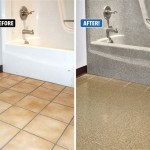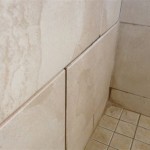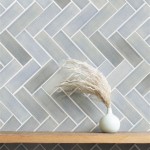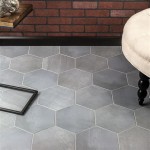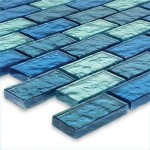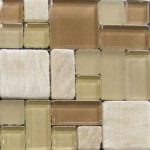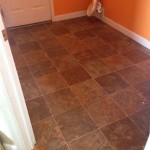How To Replace Grout In Bathroom Tiles: A Comprehensive Guide
Replacing grout in bathroom tiles is a common home maintenance task. Over time, grout can become discolored, cracked, and even harbor mold and mildew, detracting from the appearance and hygiene of the bathroom. While it might seem daunting, replacing grout is a manageable project for many homeowners with the right tools, materials, and understanding of the process. This article provides a detailed, step-by-step guide on how to successfully replace grout in bathroom tiles, ensuring a clean, durable, and aesthetically pleasing finish.
Key Considerations Before Beginning
Before embarking on the grout replacement project, several key considerations should be addressed. These factors will impact the scope of the project, the materials required, and the overall success of the endeavor.
First, assess the extent of the grout damage. Determine if the entire bathroom needs regrouting or if only specific areas are affected. Spot repairs might suffice for minor cracks or discoloration, while widespread damage necessitates a complete grout replacement. Identifying the scope of the problem up front allows for accurate material estimation and planning.
Next, consider the type of tile and existing grout. Different types of tile, such as ceramic, porcelain, or natural stone, may require specific grout formulations. Similarly, the existing grout may be sanded or unsanded, epoxy-based, or cement-based. Using the appropriate grout type for the tile and matching it to the existing grout (if only performing spot repairs) is crucial for ensuring adhesion, color consistency, and longevity. Failure to do so can lead to aesthetic inconsistencies and structural issues.
Finally, evaluate the surrounding environment. Bathrooms are typically high-moisture environments, and proper ventilation is essential during the grout removal and application process. Ensuring adequate airflow will help the grout dry properly and prevent the growth of mold and mildew. Furthermore, protect surrounding surfaces, such as bathtubs, shower doors, and vanities, with drop cloths or plastic sheeting to prevent damage from grout dust and debris.
Gathering the Necessary Tools and Materials
Having the right tools and materials on hand before starting the project is essential for efficiency and a professional-looking result. This list outlines the essential items needed for successful grout replacement:
Grout Removal Tools: A grout saw is the primary tool for removing old grout. Manual grout saws are effective for smaller areas, while power grout removal tools are faster and more efficient for larger projects. Oscillating multi-tools with grout removal attachments are also a popular option. In addition, a utility knife can be helpful for scoring along tile edges to prevent chipping during grout removal. Safety glasses are crucial for protecting the eyes from flying debris, and a dust mask or respirator will prevent inhalation of grout dust.
Cleaning Supplies: A shop vacuum is essential for removing grout dust and debris from the tile surfaces and grout lines. A stiff-bristled brush, sponge, and clean water are needed for cleaning the tiles after grout removal and before applying new grout. A pH-neutral cleaner may be necessary to remove stubborn stains or residues.
Grouting Tools and Materials: New grout, either sanded or unsanded depending on the tile type and grout line width, is the core material. A grout float is used to press the grout into the grout lines and remove excess grout. A grout sponge is essential for cleaning the tile surfaces after grouting, and a bucket of clean water is needed for rinsing the sponge. Grout sealant is recommended to protect the new grout from moisture and staining. A caulk gun is needed if applying caulk along edges where the tile meets walls, tubs, or showers.
Miscellaneous Supplies: Painter's tape can be used to protect adjacent surfaces and create clean grout lines. Drop cloths or plastic sheeting are necessary to protect floors and fixtures from grout dust and spills. A mixing bucket and mixing stick are needed for preparing the grout according to the manufacturer's instructions.
Step-by-Step Guide to Grout Removal and Replacement
The grout replacement process involves several distinct steps, each requiring careful attention to detail. The following guide provides a comprehensive overview of the process, from grout removal to sealant application.
Step 1: Prepare the Work Area. Begin by protecting the surrounding surfaces with drop cloths or plastic sheeting. Use painter's tape to mask off any areas that should not come into contact with grout, such as edges of tubs, showers, or vanities. Ensure adequate ventilation by opening windows or using a fan.
Step 2: Remove the Old Grout. Using the chosen grout removal tool, carefully remove the old grout. When using a manual grout saw, apply steady, even pressure and work along the grout lines in a back-and-forth motion. Avoid applying excessive pressure, as this can damage the tile edges. When using a power grout removal tool, follow the manufacturer's instructions and exercise caution to prevent damaging the tiles. Work slowly and methodically, ensuring that all of the old grout is removed from the grout lines. For corners and tight spaces, a utility knife can be used to carefully score along the tile edges to loosen the grout.
Step 3: Clean the Tiles and Grout Lines. After removing the old grout, thoroughly clean the tile surfaces and grout lines with a shop vacuum to remove all dust and debris. Use a stiff-bristled brush, sponge, and clean water to scrub the tiles and grout lines, removing any remaining residue. Allow the tiles to dry completely before proceeding to the next step. This is a critical step to ensure proper adhesion of the new grout.
Step 4: Mix the New Grout. Following the manufacturer's instructions, mix the new grout in a mixing bucket. Add water to the grout powder gradually, stirring continuously until a smooth, consistent paste is formed. Avoid adding too much water, as this will weaken the grout and make it more prone to cracking. Let the mixture sit for the recommended slaking time before using.
Step 5: Apply the New Grout. Using a grout float, apply the new grout to the tile surfaces, pressing it firmly into the grout lines. Hold the float at a 45-degree angle and work in a diagonal motion, ensuring that all of the grout lines are completely filled. Remove any excess grout from the tile surfaces with the edge of the grout float.
Step 6: Clean the Tile Surfaces. After allowing the grout to set for approximately 15-30 minutes (or according to the manufacturer's instructions), use a damp grout sponge to clean the tile surfaces. Rinse the sponge frequently in a bucket of clean water, and wring it out thoroughly before each wipe. Work in a circular motion, removing any grout haze from the tile surfaces. Avoid using too much water, as this can weaken the grout.
Step 7: Allow the Grout to Cure. Allow the grout to cure for the recommended time (typically 24-72 hours) before exposing it to moisture. Follow the manufacturer's instructions for the specific curing time. During this time, avoid using the shower or cleaning the tiles with harsh chemicals.
Step 8: Apply Grout Sealant (Optional). Once the grout has fully cured, consider applying a grout sealant to protect it from moisture and staining. Apply the sealant according to the manufacturer's instructions, using a brush or applicator. Allow the sealant to dry completely before exposing the grout to moisture.
Step 9: Apply Caulk (Where Necessary). Apply caulk along edges where the tile meets walls, tubs, or showers. This creates a waterproof seal and prevents water from seeping behind the tiles. Use a caulk gun to apply a bead of caulk along the joint, and then smooth it with a caulk smoothing tool or your finger. Wipe away any excess caulk with a damp cloth.
Troubleshooting Common Problems
While following the steps outlined above can lead to a successful grout replacement, certain problems may arise during the process. Understanding common issues and their solutions can help ensure a positive outcome.
Grout Cracking: Grout cracking can occur due to several factors, including improper mixing, insufficient curing time, or movement of the substrate. Ensure that the grout is mixed according to the manufacturer's instructions and allowed to cure fully before exposure to moisture. If the substrate is prone to movement, consider using a flexible grout formulation.
Grout Discoloration: Grout discoloration can be caused by mold, mildew, or staining from spills. Regular cleaning with a pH-neutral cleaner can help prevent discoloration. If discoloration occurs, consider using a grout cleaner or stain remover. In severe cases, the discolored grout may need to be removed and replaced.
Grout Haze: Grout haze is a thin film of grout residue that can remain on the tile surfaces after cleaning. It can be removed with a grout haze remover or a solution of vinegar and water. Be sure to follow the manufacturer's instructions and test the solution in an inconspicuous area before applying it to the entire surface.
Tile Damage: Tile damage can occur during grout removal if excessive pressure is applied or the wrong tools are used. Work slowly and carefully, using the appropriate tools for the job. If tile damage occurs, the damaged tile may need to be replaced before applying new grout.
Inconsistent Color: Inconsistent grout color can occur if different batches of grout are used or if the grout is not mixed thoroughly. Use the same batch of grout for the entire project, and ensure that it is mixed thoroughly before application. If color inconsistencies occur, the affected grout may need to be removed and replaced.
By understanding the process of grout replacement, gathering the necessary tools and materials, and addressing potential problems, homeowners can successfully refresh the look and functionality of their bathrooms. Routine maintenance and prompt attention to grout damage will help extend the life of the tile installation and prevent more extensive repairs in the future.

How To Regrout Bathroom Tile In 5 Easy Steps True Value

How To Prevent Expensive Bathroom Shower Tile And Grout Repair Promaster Home Handyman

Can I Put New Grout Over My Old The Medic

How Do I Know If Need To Regrout My Shower The Grout Medic

Is Ed Grout A Problem Repair Easy The Medic

Quick Fix Repair Ed Bathroom Grout

How To Repair Ed Tile Grout An Easy Guide The Lived In Look

How To Replace Moldy Grout

How To Fix Holes In Shower Grout The Experts

Six Easy Steps To Regrout Bathroom Tiles For A Show Home Finish Prevent Mould Express Co
Related Posts

